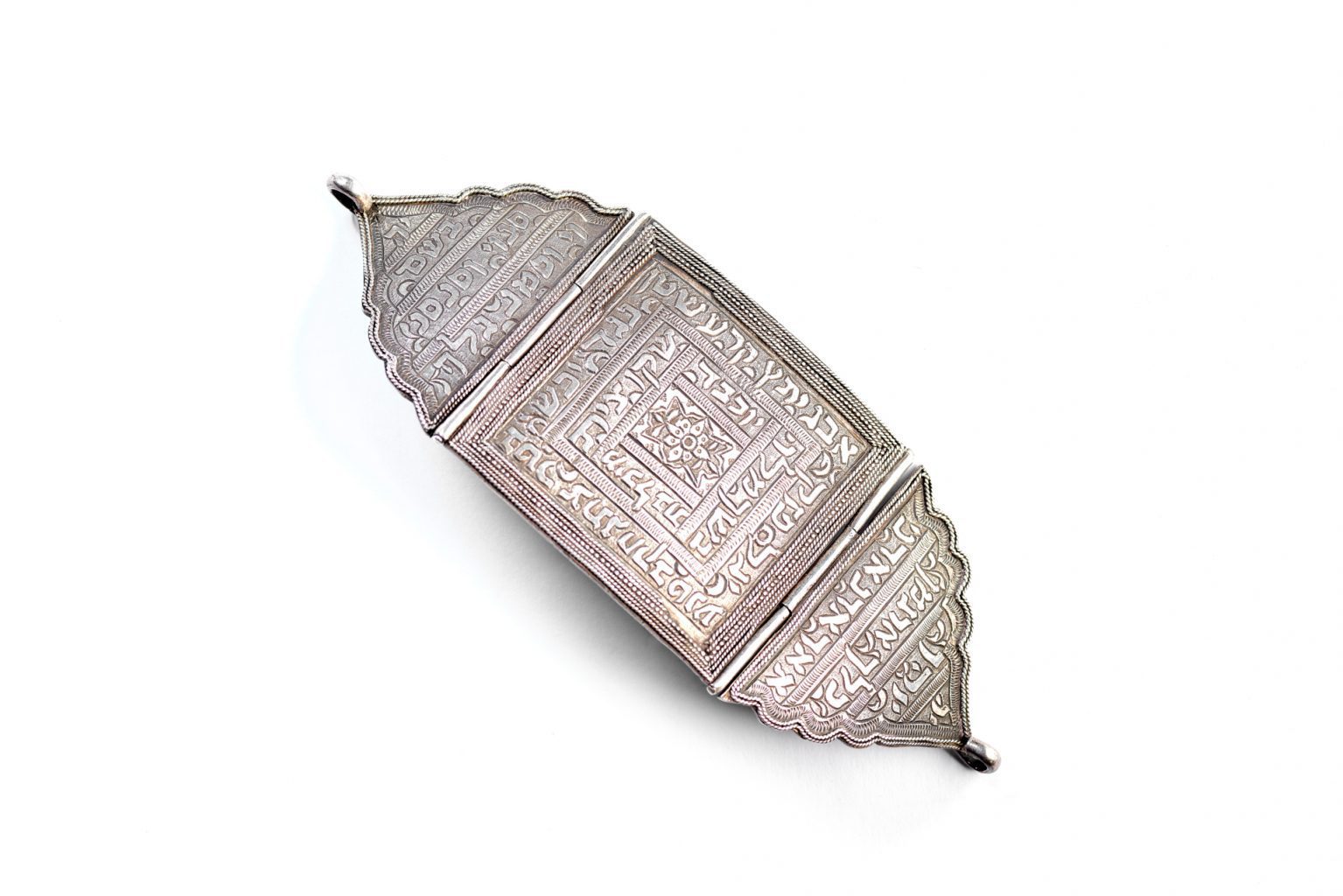Arm Amulet for Expectant Mother Persia, 18th or 19th century
Silver engraved and soldered
Gift from the Alan B. Slifka Foundation, New York
Must Know
The amulet was made for a woman named Michal Bat Yocheved. It consists of three parts: a main square part and two triangular “wings”. The parts are attached to each other by hinges. It is worn on the arm by using a red cotton thread fastened to the arm by beads. It is presumed that the amulet used to be one of a pair (one amulet for each arm, according to William Gross).
More Info
The amulet was made for a specific woman in preparation for childbirth. On the amulet we can see her name – Michal Bat Yocheved – that runs in a circle in the main part. Once an amulet had been used, it was usually melted down and the silver was used for other purposes.
The main part of the amulet consists of three squares, each of them inside one another. In the outer square, the name M”B is written (the name of God in a 42-letter long phrase) which ends in the middle square and is followed by the initials of the words “Blessed be the name of His glorious kingdom for all eternity” and the name of the woman giving birth. There is a flower decoration in the innermost square. On one wing, the names of the angels Senoy, Sansenoy, and Semangelof appear whose role is to give protection against the demon Lilith during childbirth. On the other wing, there are letter combinations with protective power that comes from acronyms or endings of sentences in the Bible, for example the word ARGAMAN, that is the initials of angels such as Uriel, Raphael, Gabriel, Michael, and Nuriel.
Even here we can see that common formulas for protection in the Jewish world in general repeat themselves, especially childbirth: the names of the angels and the name of God written in 42 letters. In contrast, in other cultures and traditions the amulet is placed in the delivery room or the woman giving birth wears it at a place on her body where it does not disturb the course of the childbirth.

